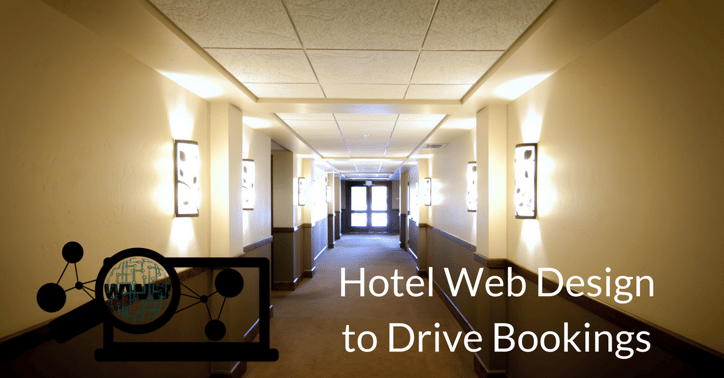If you’re looking for a way to increase direct bookings and limit that amount of commissions you pay to online travel agencies than you’ve come to the right place. While these agencies play an important role in your hotel marketing strategy, but the guests you get from them come at a price. Chances are these agencies are your biggest source of referral traffic to your site, but how do you capture these visitors’ attention and get them to book directly on your site? This is where an organized and effective hotel website design comes into play.

Let’s take a look at the analytics. When travelers are searching for a hotel on one of these travel agencies, half of them click through to your site to see what you have to offer them. This is your time to shine. Show them the great experience they’ll have when they book a room at your hotel. The biggest challenge is keeping them on your site instead of booking on the travel site.
Design around Conversion
In order for you to get the direct booking, it needs to be extremely easy for visitors to browse your room selection, compare amenities, and select travel dates. If they came to your site from the travel agency, chances are they’ve already filled out these specifics, so this reinforces the need for ease and organization of elements on your website.
Give them something they can’t get on the travel agency’s site. A great way to do this is through content, especially videos. In fact, 68% of people say they’re more encouraged to book a hotel after seeing a video of the hotel’s amenities.
Adding a video to your website that shows guests having the time of their lives at your hotel will allow guests to visualize themselves in those situations. This means they’ll get excited to come to your hotel, and for a brief moment they’ve forgotten about the travel agency site they were just on.
It can’t just be any video. It needs to invoke the emotional response that will allow visitors to connect with your unique selling proposition. It needs to show them what they’ll miss out on if they book a room somewhere else.
Just because you include a video doesn’t mean you’re going to start getting an influx of direct bookings. I wish it was that easy. Your hotel’s website design needs to be simple and easy to navigate. Each page should have a purpose, and should help a user accomplish a single goal.
Conduct user tests to see how people interact with your website. Ask them to do one task for each page, and if they struggle to do so your site might be too cluttered or unclear. If they’re on your amenities page, don’t overload them with booking information. Give them the value they’re looking for on the page they click on. This way, you’ll be able to keep them focused on the experience they’re getting ready to have at your hotel.
Integrate Design with Marketing
This is where a lot of web design goes awry. Just because something looks great and captures attention doesn’t mean it will bring you the results you need to achieve your business goals. It’s imperative that your design team be aligned with your hotel marketing and sales teams to deliver a website that brings you the results you need for sustainable business growth, and a predictable flow of direct bookings.
We call this process of designing around business goals SMART Design. It’s an agile approach to the web design process to more thoroughly build, maintain, and grow websites into a peak performing digital marketing asset.
When you align your design goals with your marketing and sales goals, you’ll be able to learn from the activity on your site to provide users with the value and user experience they’re actively looking for. So what does this look like?
It all starts with putting your website in front of your target audience and gathering primary data. Best practices are great and you should definitely follow them, but when it comes down to it, what really matters is how your users interact with your site.
Continuously Learn and Improve
Just because you have a new website that you’re happy with doesn’t mean it’s the best it can be. Unfortunately, there’s no such thing as a perfect website. There is always room for improvement and you can always learn from the way users interact on your site.
This doesn’t mean you need to completely redesign your website every couple months, but it should be easy to go in and make changes as necessary. These changes could be anything from adding a video where a static picture was, including a form so users can request more information, or adding valuable content you think your ideal guests would engage with.
These changes should be easy to make, however they should all be backed by user data gathered from your analytics. This will make sure you’re making changes that will positively impact the user experience.
Ultimately, the people who land on your hotel’s website must see the value you’re offering within the first couple seconds of being on your site. This way, they’ll be able to start imagining their getaway at your hotel. Give them engaging content. Make it extremely clear as to what the next step for them is and make it accessible. People are making more travel decisions from smartphones so your site needs to be responsive in design. When you have an intuitive and responsive site with valuable content that walks them through the booking process, you’ll start to increase your direct bookings.




